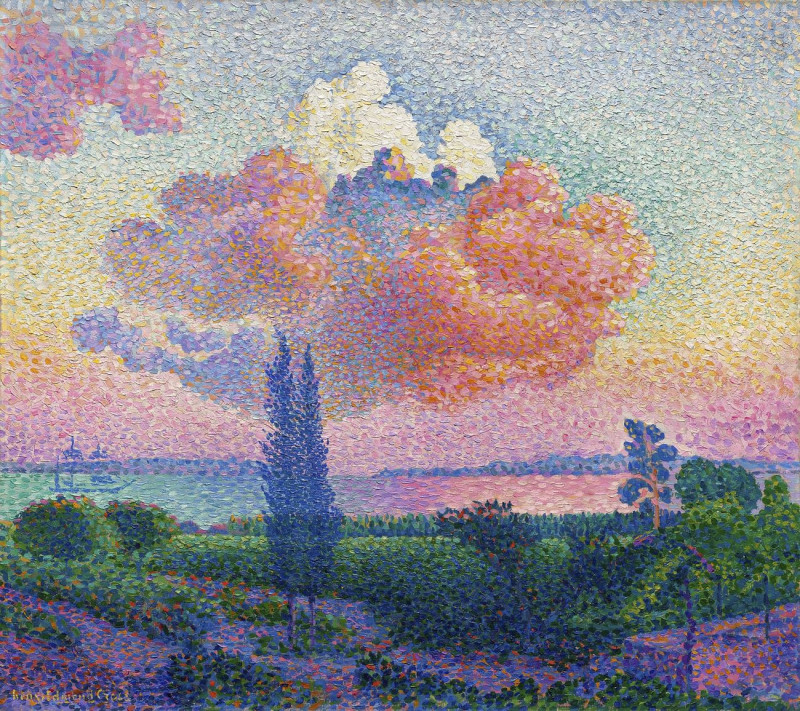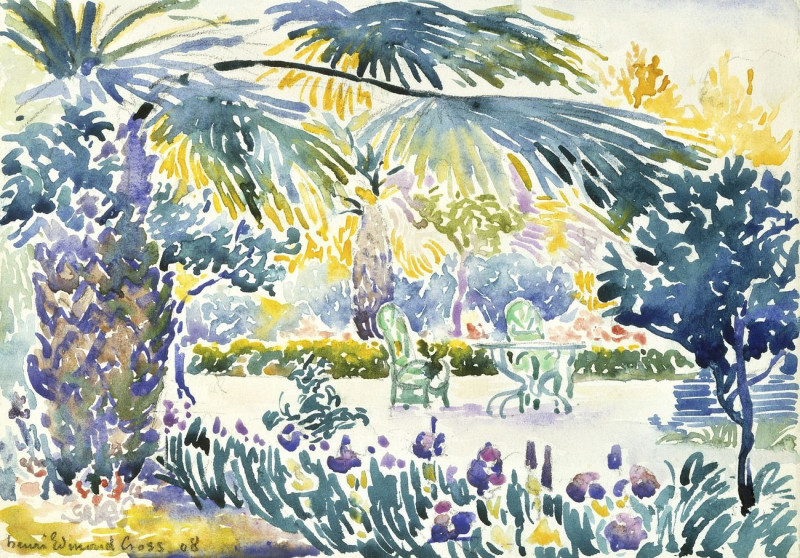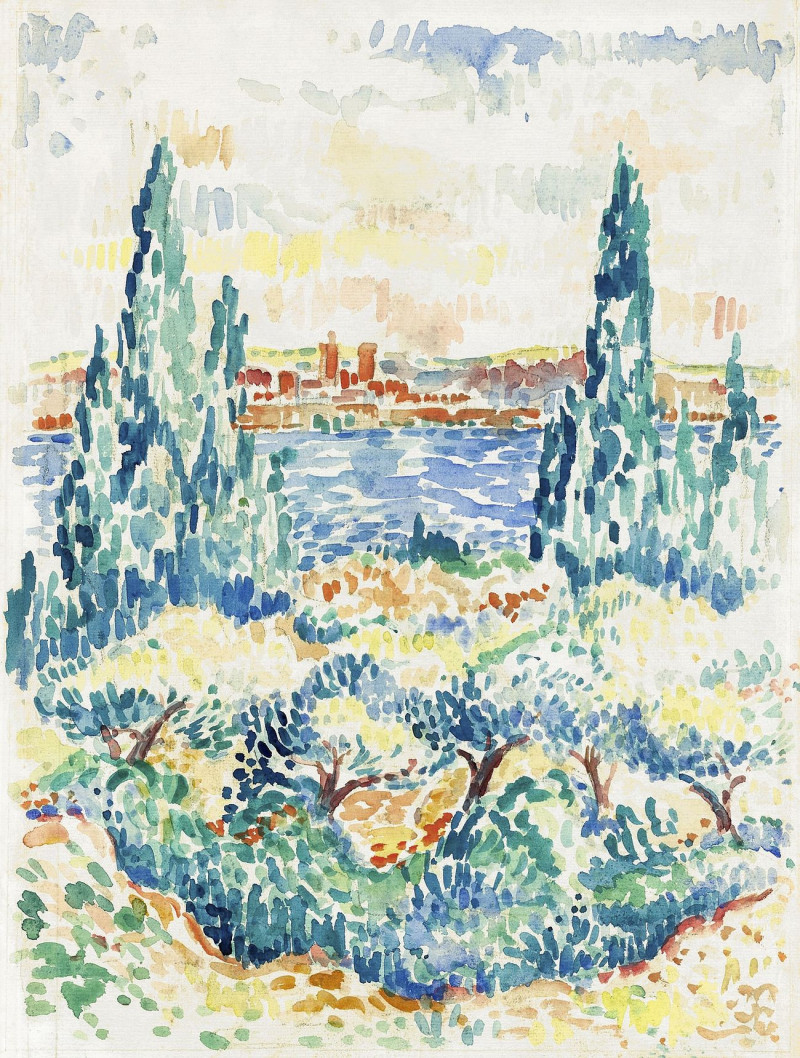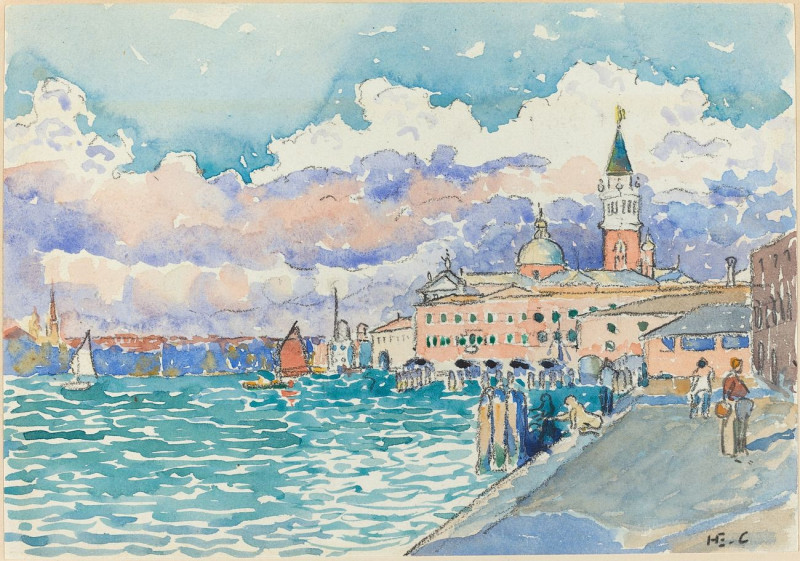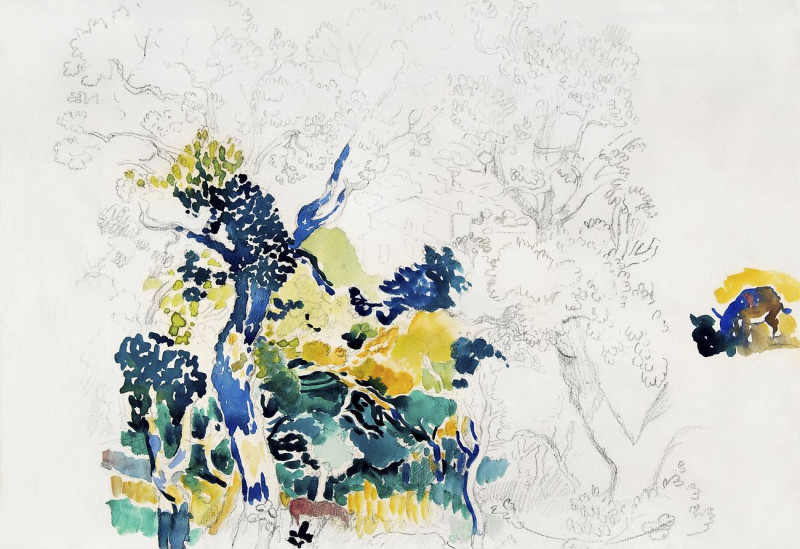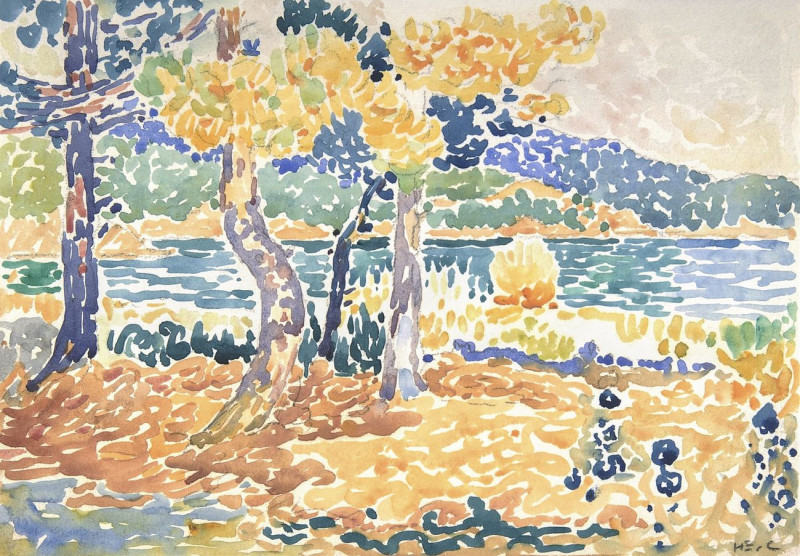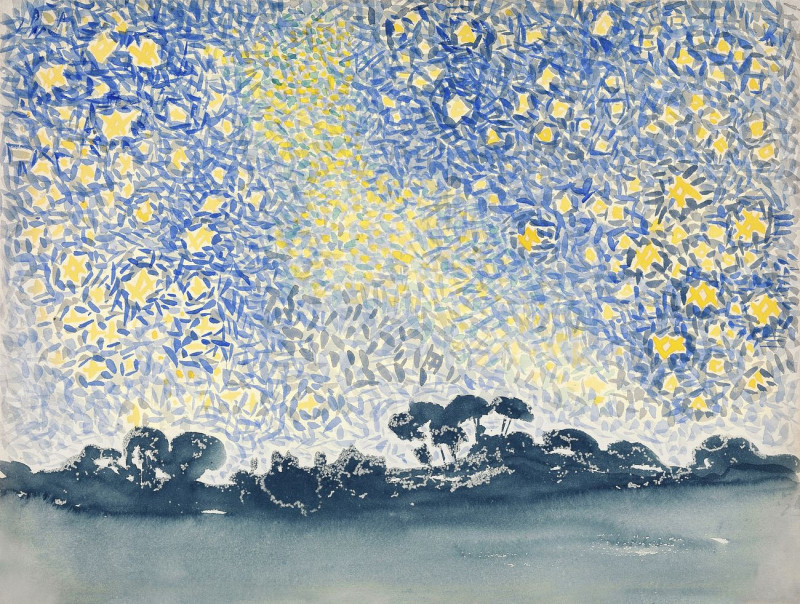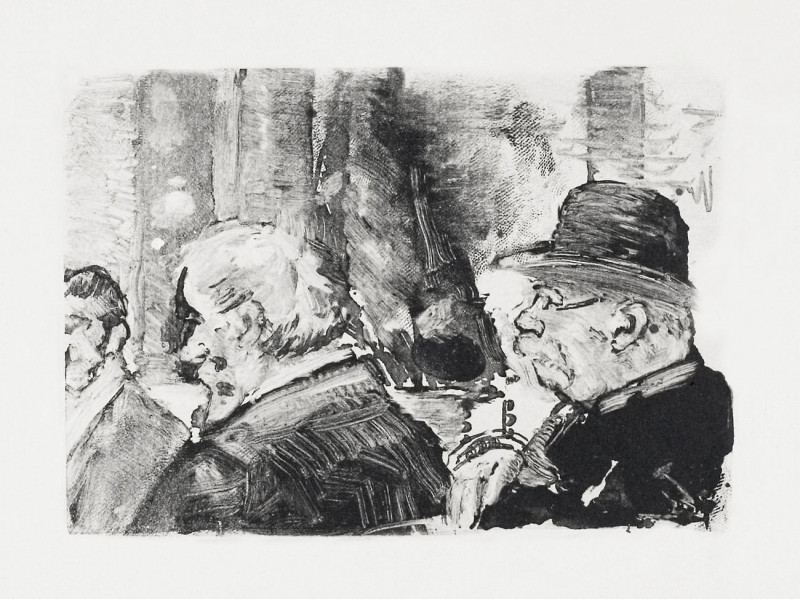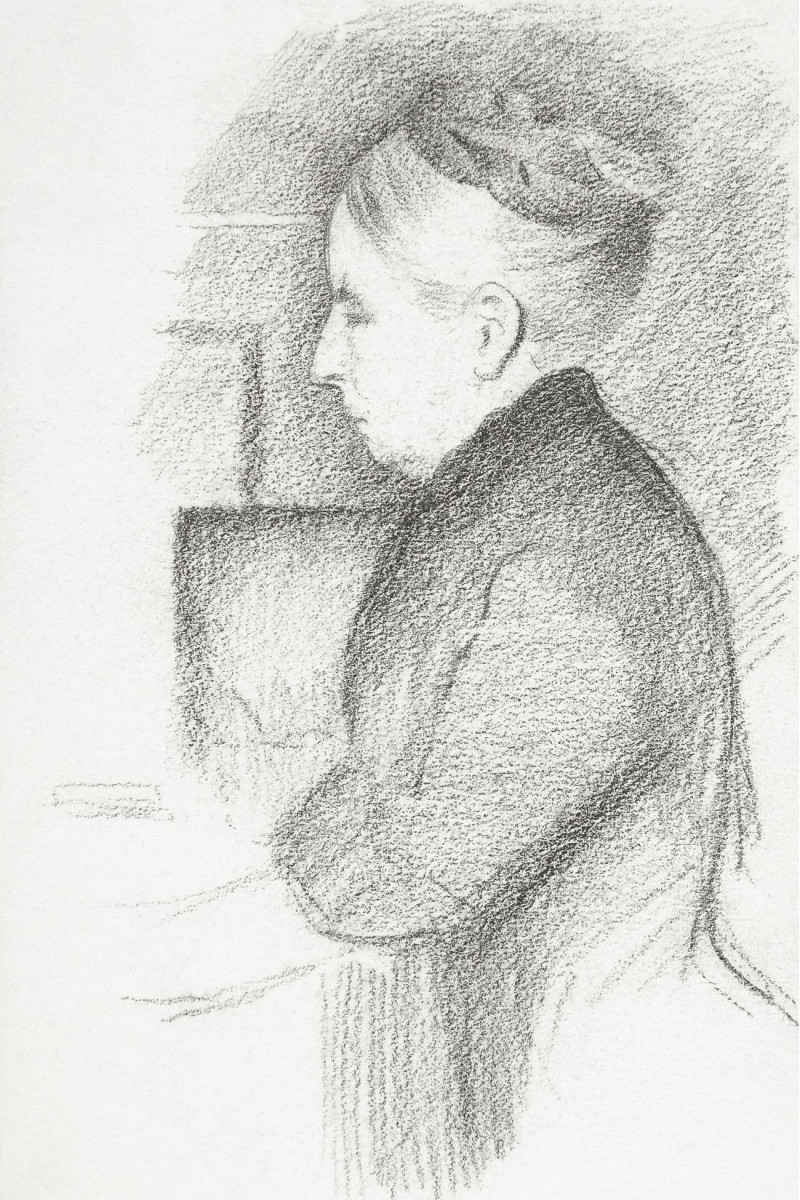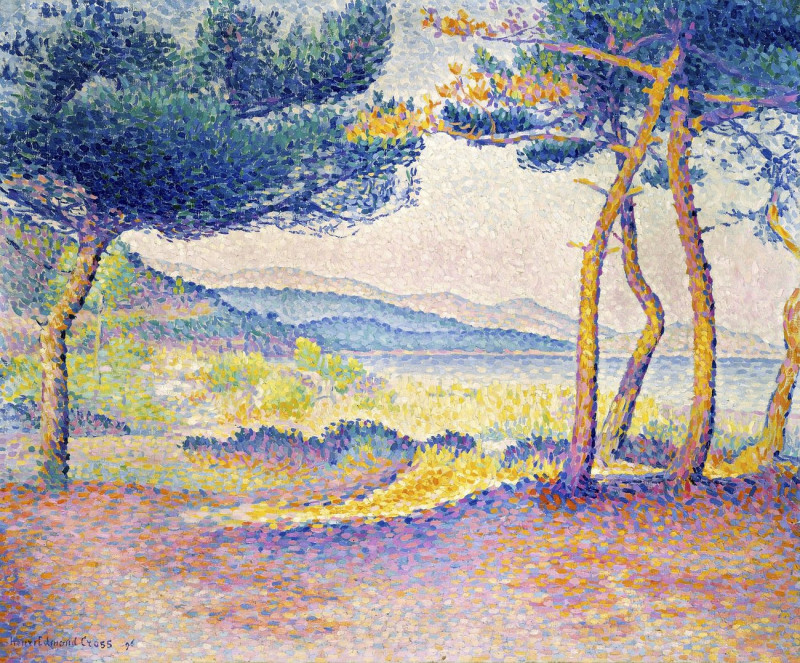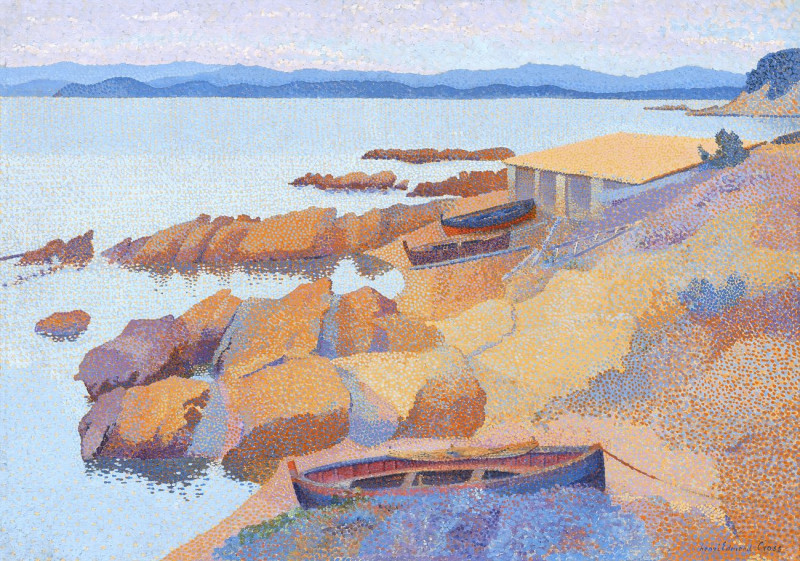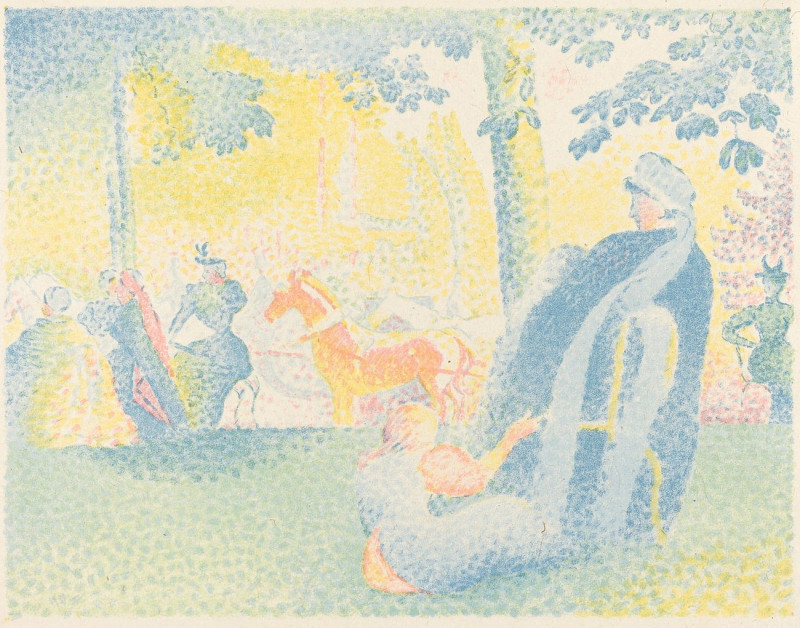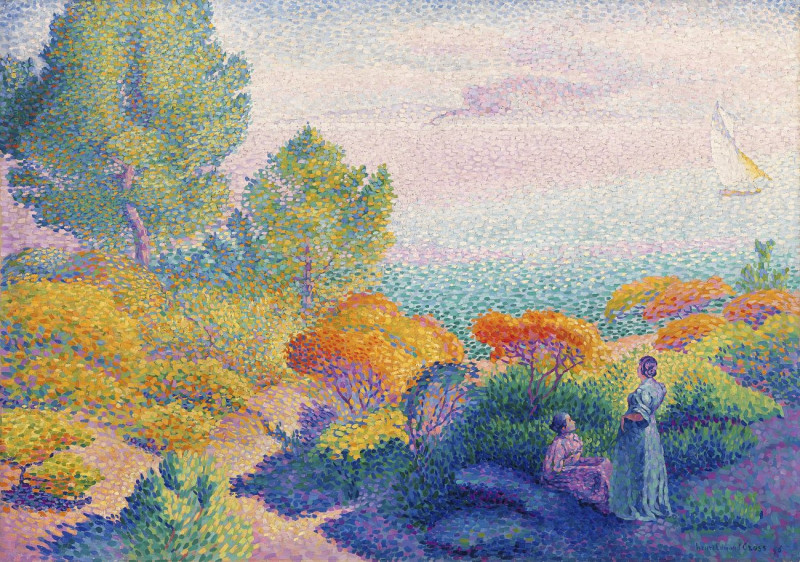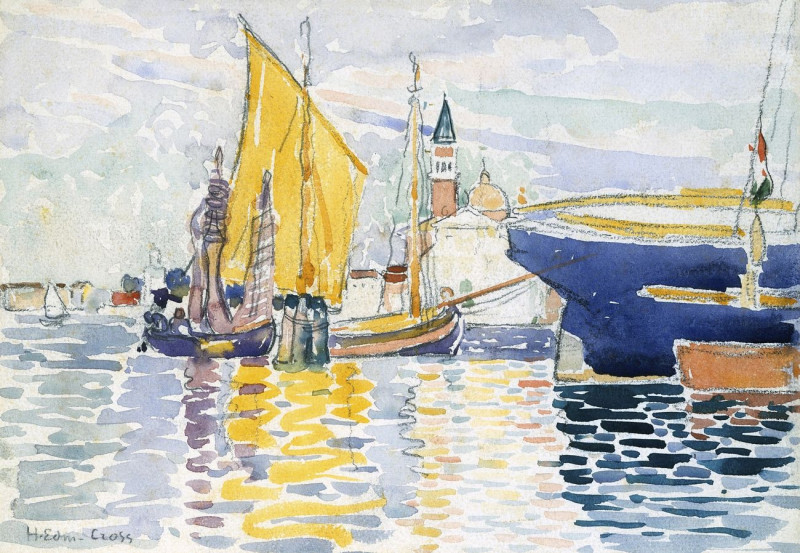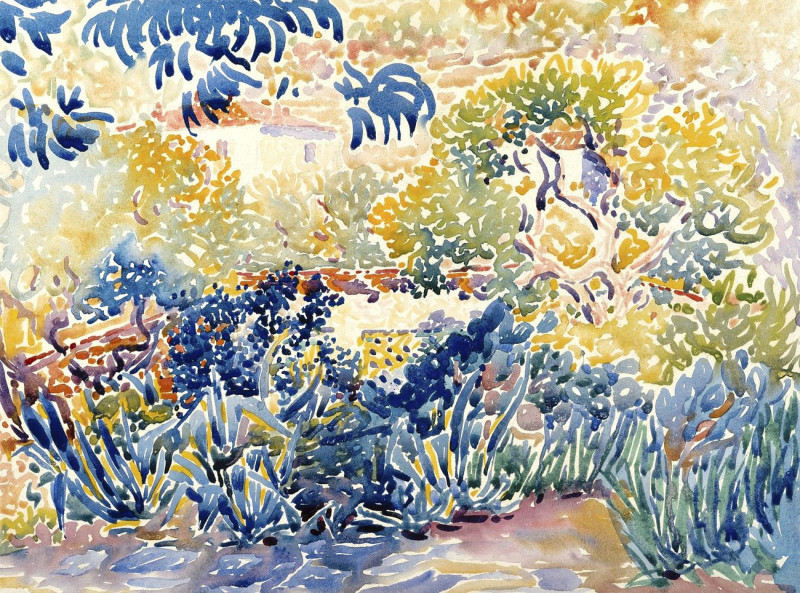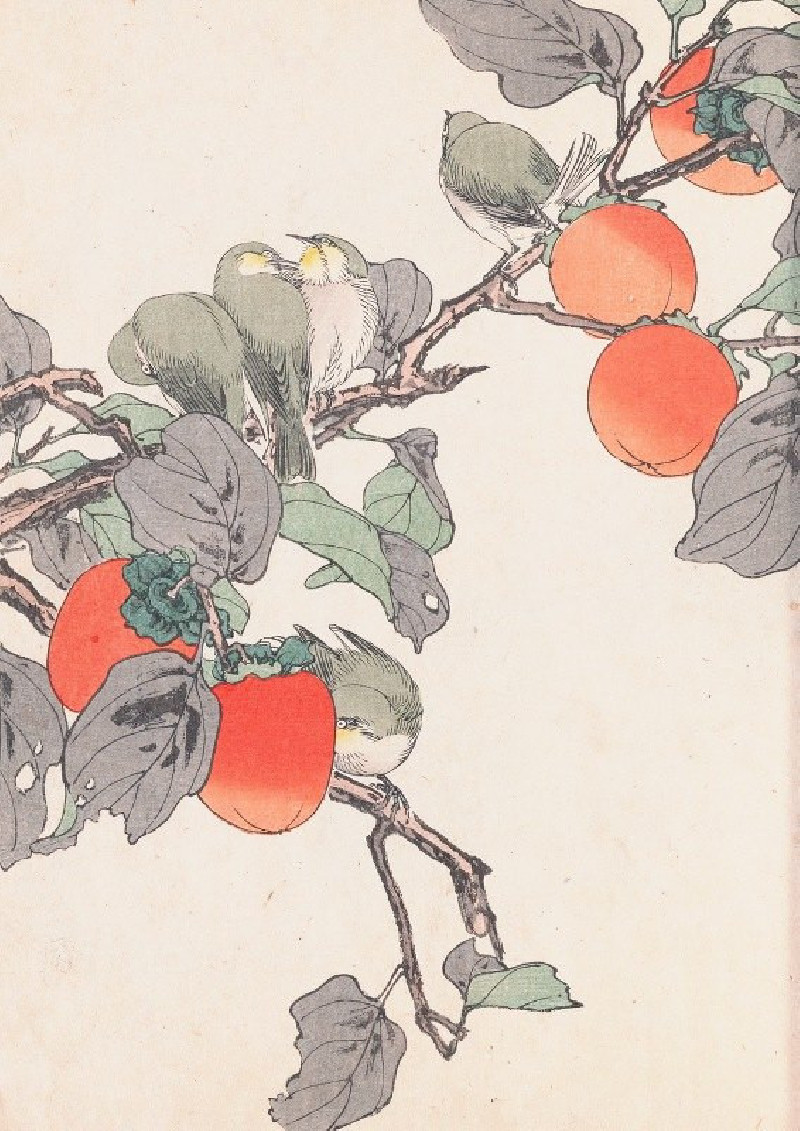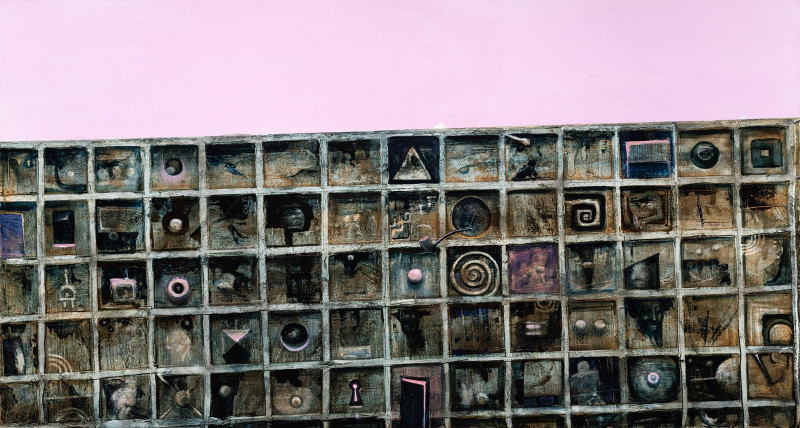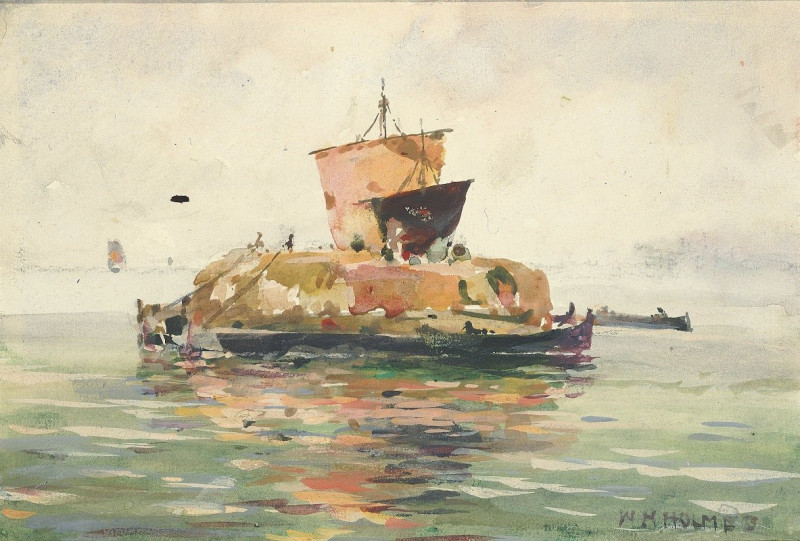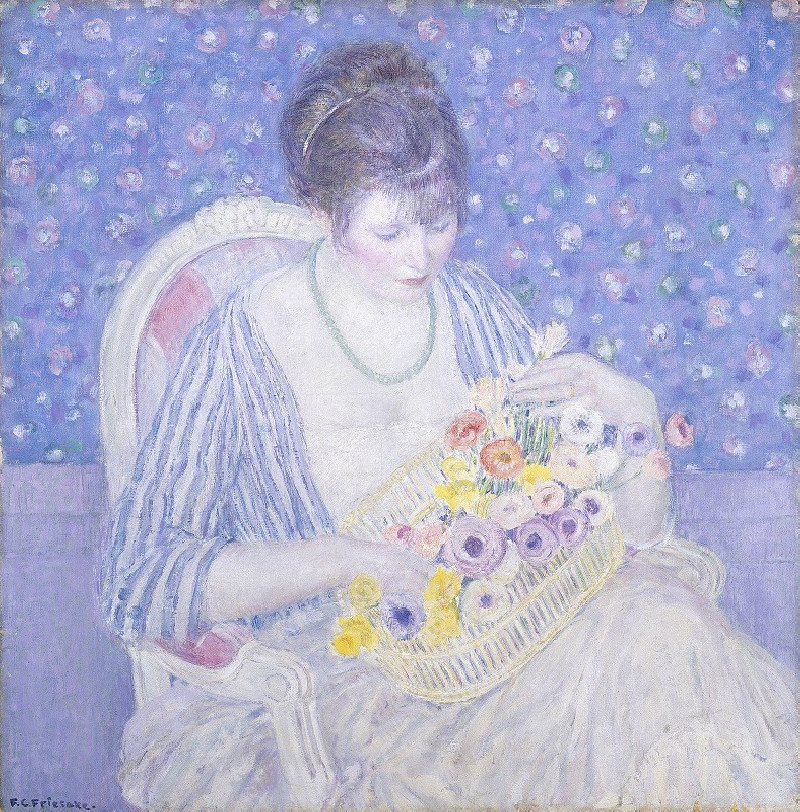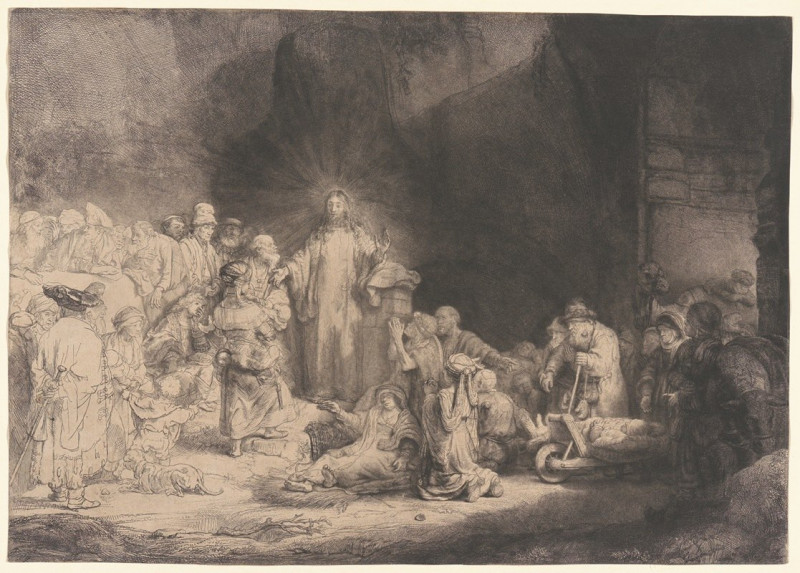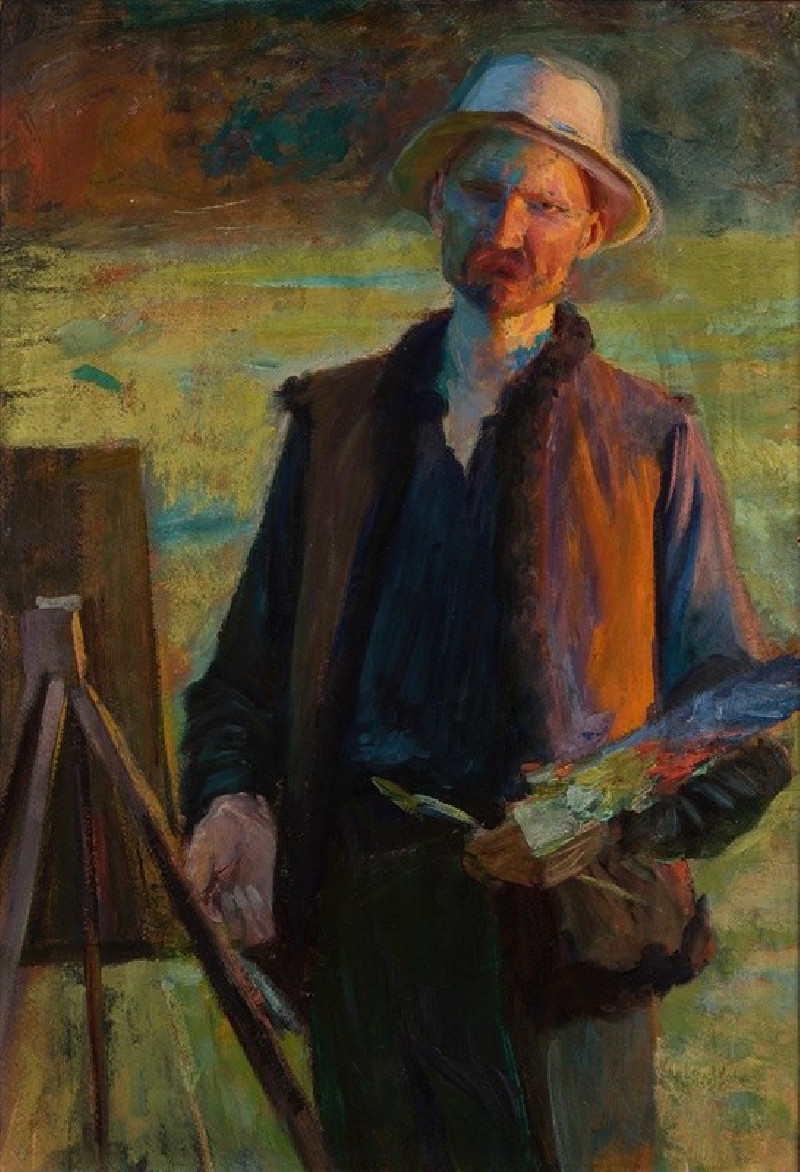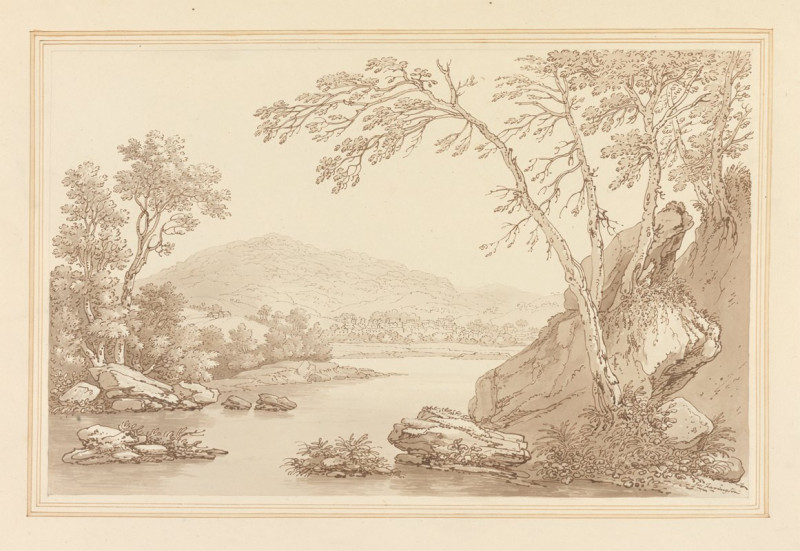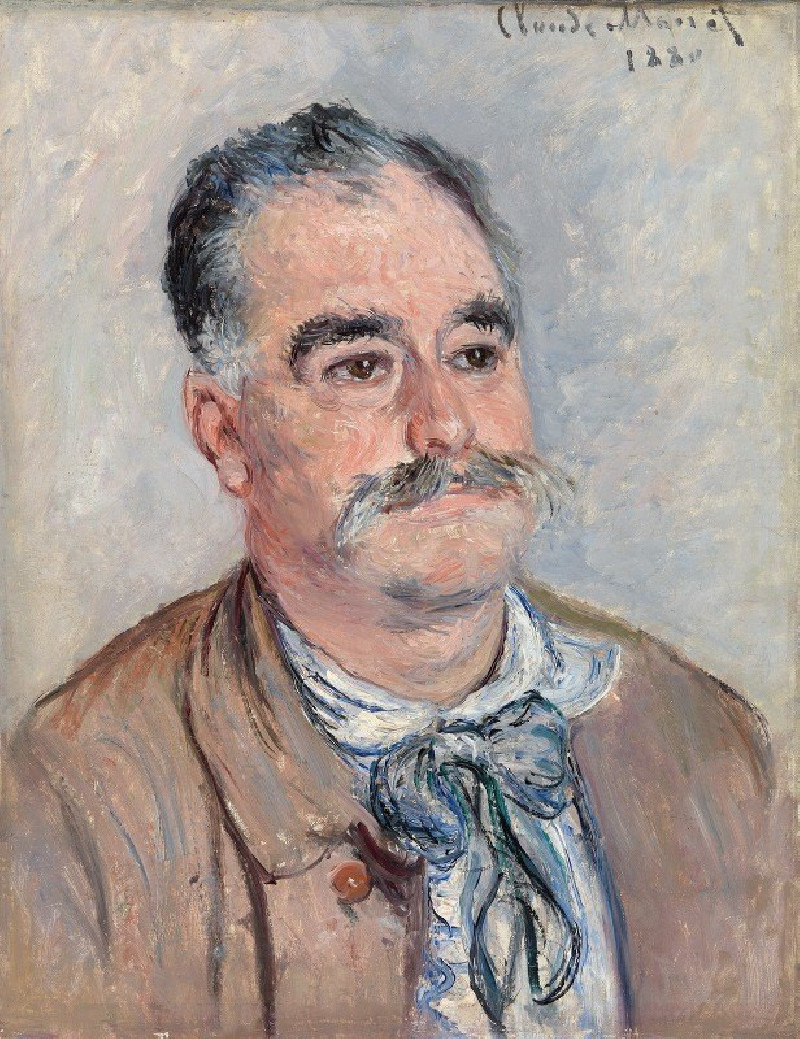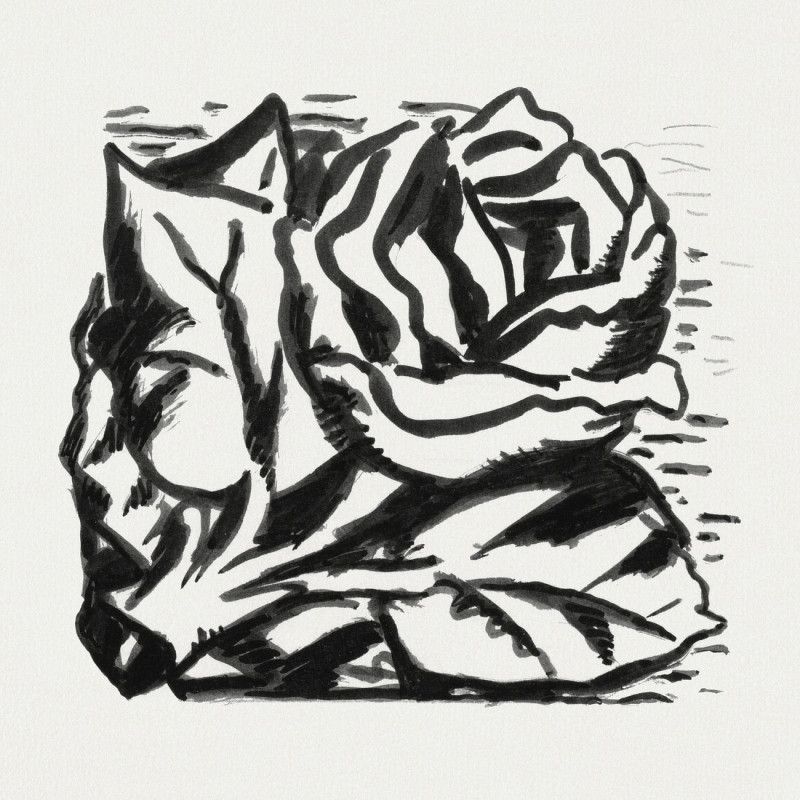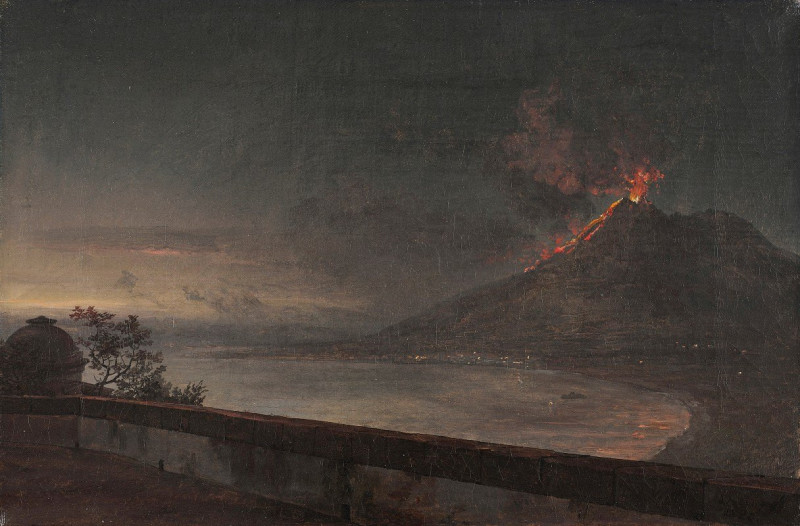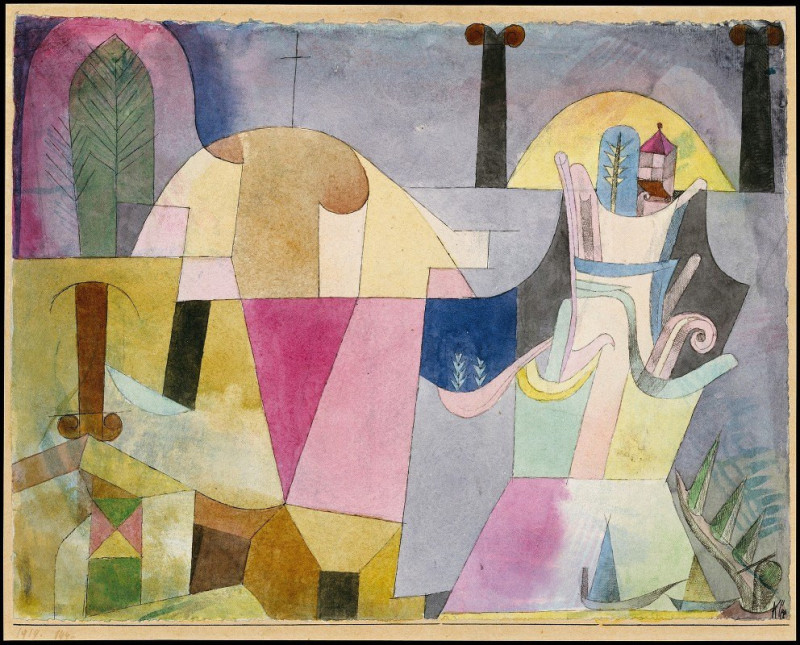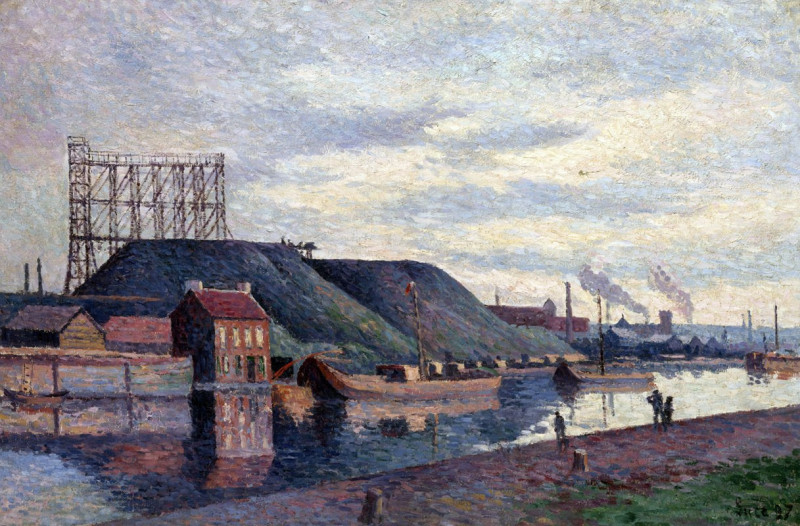Study For 'Le Ranelagh
Technique: Giclée quality print
Recommended by our customers
More about this artwork
The painting "Study for 'Le Ranelagh'" by Henri Edmond Cross is an evocative representation of a bustling outdoor scene, likely at the Ranelagh Gardens, a popular social gathering place in Paris during that era. The artwork features Cross's signature Divisionist technique, with vibrant, expressive brushstrokes that add dynamism and a textured quality to the scene.In the foreground, various figures are depicted in a relaxed, convivial atmosphere. These figures are sketched with a degree of abstraction, their forms simplified but characteristically human, reflecting the casual, leisurely vibe of the setting. There appear to be groups of people sitting on what might be benches or grass, engaged in conversation or perhaps simply enjoying the surroundings.The background is dominated by sweeping, gestural strokes of green and blue, representing the lush foliage of the gardens. This lushness is broken by lighter patches that suggest sunlight filtering through the trees, creating a lively interplay of light and shadow. The depth of the scene is enhanced by hints of architectural elements and more people in the distance, which provide a sense of scale and activity.Overall, "Study for 'Le Ranelagh'" captures the essence of a moment in time at a popular social rendezvous, showcasing Henri Edmond Cross's ability to meld color, light, and form to evoke a vibrant, atmospheric quality. The painting is likely a preliminary work, exploring composition and color ahead of a more definitive piece, which is characteristic of study paintings.
Delivery
Returns
Henri-Edmond Cross (1856-1910) was a French artist known for his Pointillism paintings of landscapes and still life. He co-founded Société des Artistes Indépendants in Paris, where he met and was inspired by the Neo-impressionist painter Seurat. Due to rheumatism, Cross moved to the south of France, where Signac was also based. Together they abandoned the tiny colored dots of Pointillism for orderly brushstrokes in the style of mosaic. This was second generation Neo-Impressionism, and laid a path for Fauvism.


